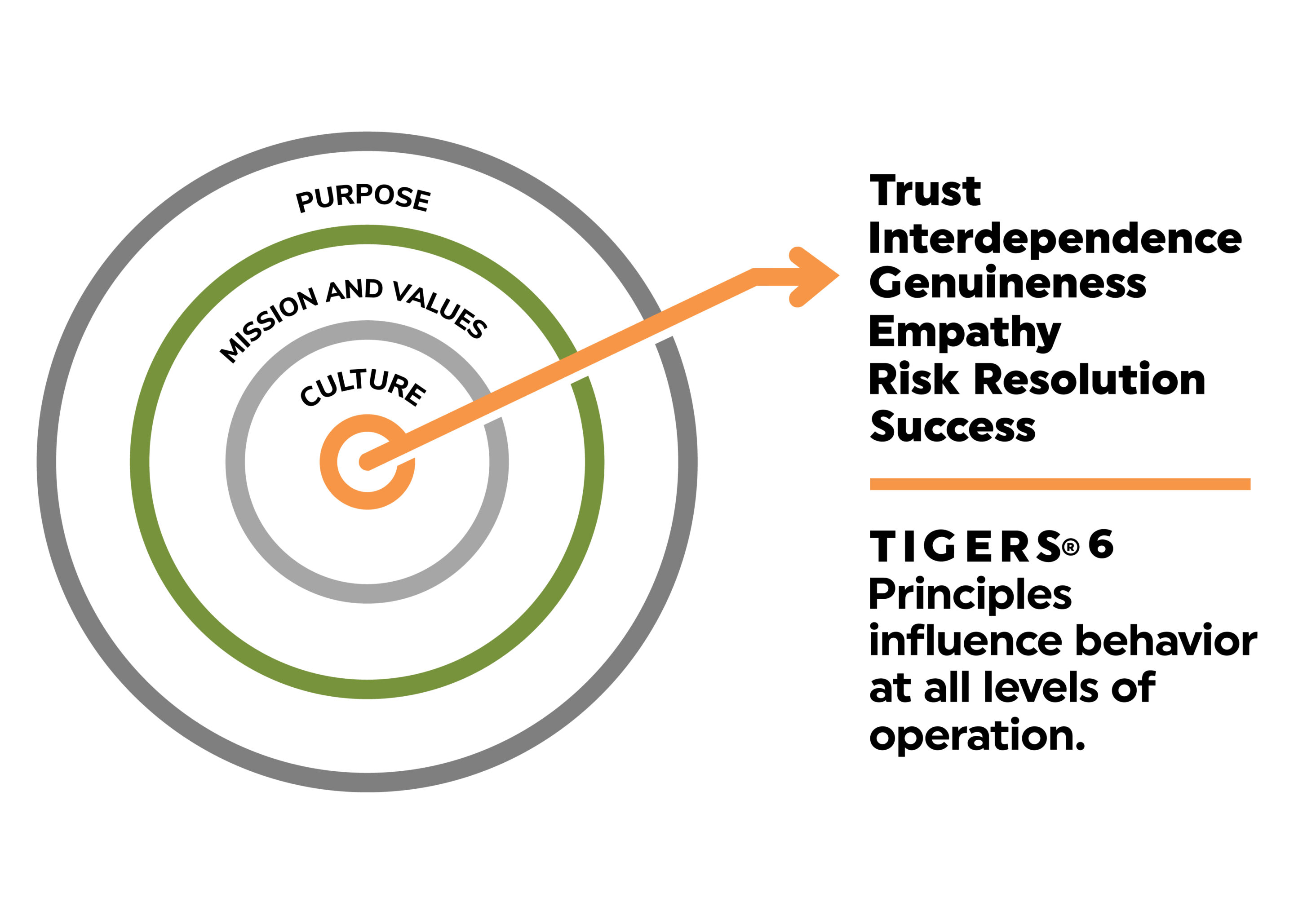 In our May 25, 2011, I discussed six principles that build highly effective, collaborative and cooperative teams. In this post, I explore how these principles faired during two extensive independent studies conducted by Gonzaga University and the Washington Education Association thart resulted in the TIGERS Model.
In our May 25, 2011, I discussed six principles that build highly effective, collaborative and cooperative teams. In this post, I explore how these principles faired during two extensive independent studies conducted by Gonzaga University and the Washington Education Association thart resulted in the TIGERS Model.
Once the six TIGERS collaborative principles – trust, interdependence, genuineness, empathy, risk and success — surfaced from education, business and psychology group dynamic studies, a survey containing 57 questions was developed to determine whether the values were measurable and reliable indicators of collaborative team development.
Teams from 17 intact groups, including a Boeing facility participated in the survey. The teams received a pre and post survey and teambuilding interventions over an 18 month period. The results were independently monitored by heads of departments at Gonzaga University and were interesting. One finding concluded that the Principles interdependence and success are highly correlated with the other four values.
This means that an improvement in either Interdependence or Success will increase the other values, too. This made good sense. The TIGERS Model does balance the team and work equation.
What was also interesting is that the principle, Interdependence, speaks to building collaborative relationships while Success speaks to accomplishing quality work and achieving goals. Therefore, balances between the work people do and the well being and relationship quality of people doing the work is critical for long term team success.
Another finding concluded that the six values predict group behavior either by their inclusion or omission. This means that group dynamics is measurable and corrective action can be taken to shorten the time new teams spend in conflict.
Another finding indicated that certain understandings that people have about effective team behavior line up with individual values. Therefore, the survey could measure with a good degree of reliability where teams are strong and areas for improvement.
Valid and reliable
One year later another study was conducted by school districts through the Washington State Education Association. Officials from the teacher’s union wanted to identify specific training to offer teachers to improve team skills for school site councils. The concept of school site councils – teams — was a new concept in Washington State.
The trend toward site councils — composed of teachers, parents, and principal – proposed that a site council was best suited to make decisions, solve the school’s problems, create and monitor improvement programs then school administrators who had little knowledge of the school’s daily operations and service area. This was a transitional shift from school administrators making all the decisions to localized, team decision making.
Unfortunately training and development days for teachers were seriously limited. WEA wanted to know where they would receive their best return on their training investment on a school-by-school basis.
WEA concluded that the TIGERS survey was highly predictive and gave the school a good team opinion snapshot for strategic workforce development training and team development purposes. And since the six values are demonstrated by behaviors that are readily visible, WEA officials concluded that TIGERS was basic, simple and made good common sense.
As a result, officials further concluded that the quality of the values can also be measured and monitored over time as a site council changes or grows. This is an important feature for any team that gains and looses team members and for leaders who want to know what to look for in new employee candidates. TIGERS offered a way to track and monitor a strategic team development process on a school-by-school basis.
From the time the studies were concluded in 1993, work with merging organizations and newly emerging teams cultures concluded that the six TIGERS Principles — trust, interdependence, genuineness, empathy, risk and success — reinforce the vision, mission, goals and operational values of team-driven organizations.
The Principles and supporting behaviors limit the time teams spend in conflict and are powerful predictors for selecting successful new employment candidates to fill positions on existing teams.
Copyright TIGERS Success Series, Inc. by Dianne Crampton
 About TIGERS Success Series, Inc.
About TIGERS Success Series, Inc.
Like articles like these? Join our Stubstack,